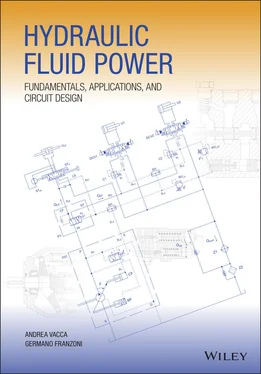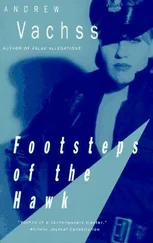Thanks to the “freedom of learning” allowed to young scholars in Italy, the authors started researching through existing literature and contacting Italian and international academic professors. Each book they had the chance to read and every class they could attend seemed to be focused only on certain aspects of hydraulics. Therefore, the authors started putting together different bits and pieces of a large collage, spending countless hours researching and animatedly debating on how to connect the dots.
The more their work was expanding, the more passionate they had become about hydraulics or better yet, “hydraulic fluid power.” They quickly realized how this discipline has a huge technical implication and it often falls under the radar of many engineering departments. But it also is a very complex technology, which embraces bits and pieces of several other disciplines: structural mechanics, fluid mechanics, heat transfer, electrical engineering, control systems, product design, and others.
The authors also realized the difficulty to teach hydraulics, and the lack of structured teaching material was also probably the root cause for the decline in academic interest for fluid power. In fact, universities preferred to focus the attention on other technologies such as electronic controls and electric drives, which are more structured disciplines and benefit from the abundance of educational materials.
Also for this reason, the passion of the authors in their exciting hydraulics journey was fueled by a few individuals they had the good fortune to interact with. Prof. Nicola Nervegna, Prof. Gian Luca Zarotti, and Prof. Monika Ivantysynova are certainly among the pioneers of modern hydraulic education. Mr. Renato Casappa is an Italian entrepreneur who, like a modern‐era Maecenas, promoted and financially supported several educational programs and symposiums. All of them felt that renewed interest on fluid power is needed to regain its lost inclusion in university curriculum. The authors feel lucky and privileged for having the chance to meet, interact, and in many cases closely work with these outstanding individuals. The level of the educational materials they produced or supported is among the best available today. Unfortunately, most of the materials created was not in English language, while some were not structured to reach the broader audience.
These are significant motivations for writing this book, aimed at filling the lack of educational materials suitable to train engineers in the field of hydraulic fluid power. However, all journeys come to an end, and both authors ended their shared research experience in Italy. While Dr. Vacca remained in the academia, Dr. Franzoni decided to pursue a career in the industry. However, as fate would have it, after several years, their paths crossed again in the American Midwest, a region that has a lot in common with the plains of Emilia Romagna in Italy where they originally met: hot, humid summers; modest, hardworking people; and a natural ingenuity born of necessity. Dr. Vacca joined one of the most important and advanced research labs in fluid power in the world, the Maha Fluid Power Research Center of Purdue University, while Dr. Franzoni joined Parker Hannifin, a global leader in hydraulics and motion control systems.
From here, the old idea of a textbook came back to life and both authors, during spring 2014, decided to seriously resume their old project. At this point, both authors could count on a much more solid base of experience. Dr. Vacca had become a well‐respected faculty in the fluid power field, with numerous hours of teaching experience, organization of symposiums and conferences, as well as R&D collaborations with major fluid power companies and OEMs. He had the chance to work closely with and be mentored by Prof. Monika Ivantysynova until her tragic passing in 2018. On the other hand, Dr. Franzoni was fortunate to experience the current industrial environment and learn from customers' applications, as well as being mentored by two exceptional engineers: Jarmo Harsia and Leslie Claar. Both have contributed in building the solid application base which, according to the authors, is one of the essential features of the textbook.
The writing of this book was certainly “easier said than done.” The authors spent more than 5 years of traveling between Lafayette, Indiana, and Chicago, to meet regularly, sacrificing family or leisure time and testing the patience of their significant others.
This book presents a new approach to the study of fluid power. Although there are parts inspired from material that can be found in other books, slides, classes or training manuals, the logic used to organize and present the design aspects of fluid power systems and the focus on real applications is completely original and unique. For these reasons, the authors are convinced that this manuscript is an excellent resource for both undergraduate and graduate level engineering classes. Furthermore, it is a reference guide that belongs on the desk of every hydraulic engineer in the industry.
The authors acknowledge many of the mentors that they had the privilege to work with: the already mentioned Prof. Nicola Nervegna, Prof. Gian Luca Zarotti, Jarmo Harsia, and Leslie Claar. More importantly, the authors firmly believe that this book would have never come to life if it had not been for Prof. Monika Ivantysynova. Both authors admired her passion and talent for fluid power research and credit her with many of the successes in their careers and personal lives. It is also thanks to her that both authors had the chance to reconnect in the USA.
The writing of the book involved also two co‐authors who were very helpful in the development of some chapters. Gabriele Altare was part of the initial team and provided a tremendous support in the illustrations and writing of Chapters 4and 5– 9, while Lizhi Shang was instrumental in the chapter dedicated to hydrostatic pumps and motors (see chapter 6).
The authors' work was reviewed by several people: the graduate students of the Maha Fluid Power Research Center (class of 2019), Pradeep Gillella, Barun Acharya, and other members of Parker Hannifin, who all provided tremendous help with chapter reviews and suggestions for improvement.
Finally, both authors want to give a special thanks to their loving wives, Jing and Sarah, who supported us during this multiple years' journey and accepted us being away from home on numerous weekends.
Part I Fundamental Principles
The first part of this book is dedicated to the description of the fundamental laws, concepts, and conventions that are necessary to comprehend the functioning of hydraulic circuits and hydraulic components.
Chapter 1contains a brief introduction of the hydraulic control technology and an explanation of the symbology used to illustrate hydraulic circuits.
Chapter 2gives an overview of the properties of hydraulic fluids and how their properties can affect the operation of a component or a circuit. It also illustrates the detrimental effects of fluid cavitation, aeration, and contamination.
Chapter 3recalls fundamental concepts derived from fluid mechanics, which are useful to describe the operation of fluid power components.
Subsequently, Chapter 4is dedicated to the orifice, which is one of the most important conceptual elements of hydraulic control circuits. Orifices can have multiple functions and variable orifices can be used to describe the operation of many hydraulic components. The orifice equation will be repeatedly used throughout the manuscript.
Although the focus of the book is on the steady‐state operation of hydraulic machines and circuits, Chapter 5introduces the reader to the basic analysis of transient operation of hydraulic circuits.
Читать дальше












